#1 Trait that PROVES Dobermans and Dachshunds Related
Dobermans and Dachshunds are two distinct dog breeds that often catch the attention of both experienced and novice dog enthusiasts. Many people may wonder if these two breeds have any connection or share a common ancestry. While both breeds have their unique histories and characteristics, they do share some similarities in their past.
The Doberman breed originated in Germany in the late 19th century and was initially bred as a guardian and companion dog. Meanwhile, the Dachshund, commonly referred to as the “wiener dog,” has a history dating back to the 15th century in Germany, where they were initially bred for hunting purposes. Despite hailing from the same country, there is no concrete evidence linking the two breeds directly in their lineage.
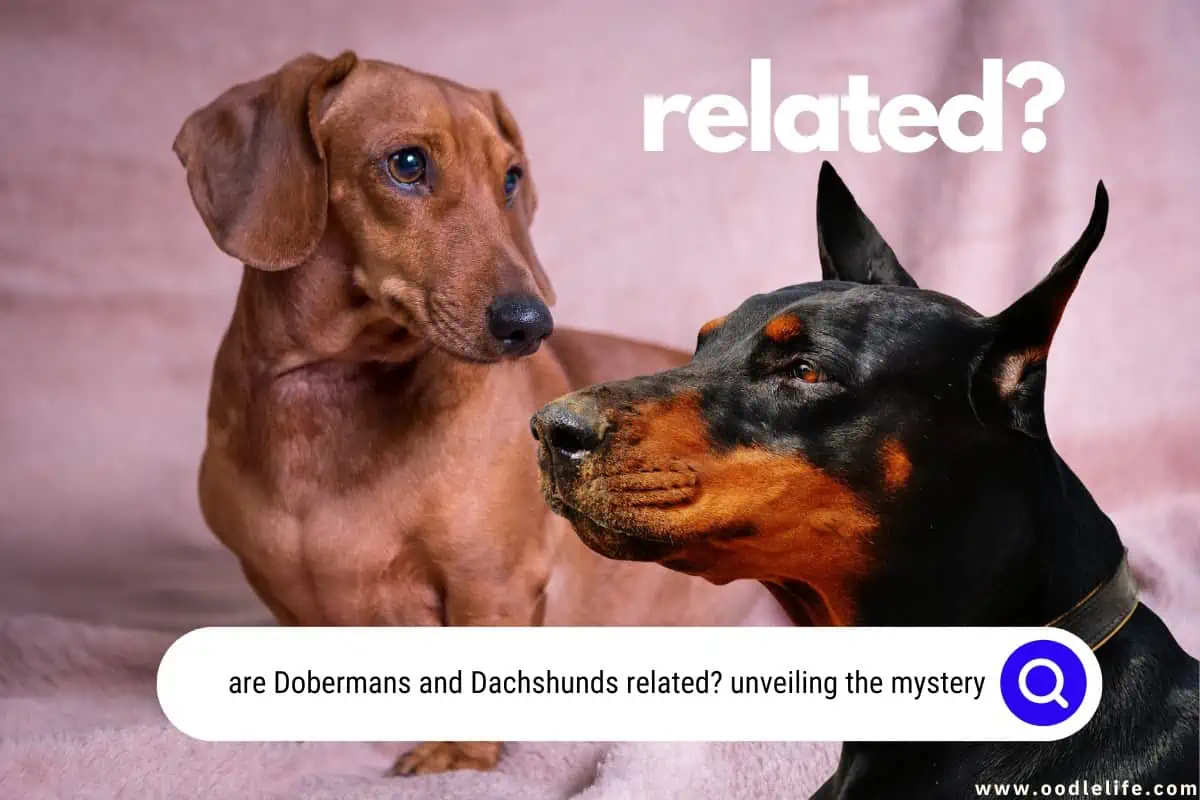
However, they do share the traits of intelligence and tenacity, which are highly regarded in both breeds.
At first glance, it may seem difficult to find any common ground between the sleek, muscular Doberman and the small, elongated Dachshund. Nevertheless, it’s essential to appreciate each breed’s unique traits and historical origins, from their physical appearances to their personalities and working abilities. Their differences only add to their appeal, and understanding their distinctive characteristics can further enhance the bond we share with these remarkable animals.
Key Takeaways
- Dobermans and Dachshunds are two distinct breeds with different histories, originating in Germany.
- Both breeds are intelligent and tenacious, available in various recognized breed standards and susceptible to unique health issues.
- Despite sharing some similarities, these breeds have distinct physical traits, activities, and working abilities, making them unique companions for dog enthusiasts.
Historical Origins
Dobermans: Louis Dobermann’s Workhorses
In the 19th century, Germany saw the development of the Doberman breed, thanks to a man named Louis Dobermann. Inspired by the need for a strong and reliable workhorse by his side, Louis set out to create the perfect blend of dog. The breed came to life by crossing the Rottweiler, the Black and Tan Terrier, and other breeds.
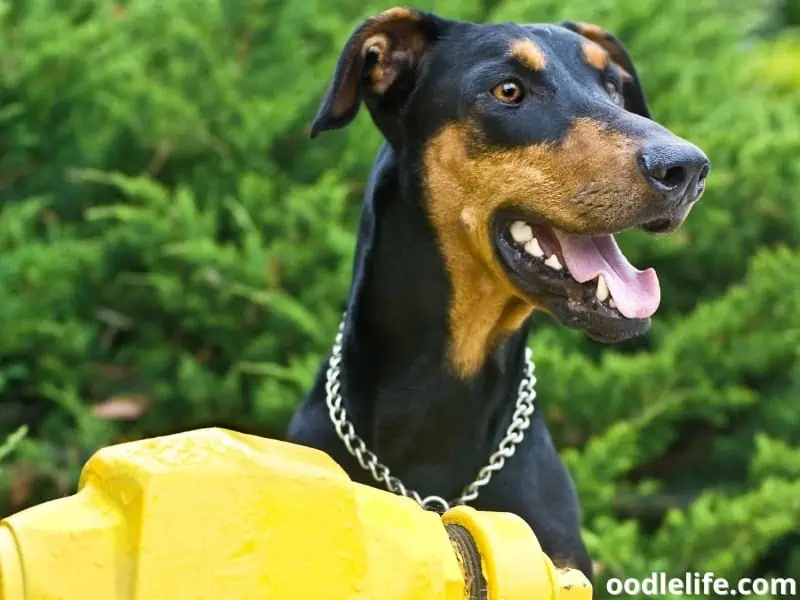
This experimentation eventually resulted in the fearless and intelligent Doberman we know today.
The Doberman, initially known as the Doberman Pinscher, was designed for various tasks. Some of these included protecting its owner, serving as a police or military dog, or simply as a loyal companion. The breed’s versatility, along with its intelligence and loyalty, quickly earned the Doberman a special place in many hearts throughout Germany and beyond.
Dachshunds: Badger Dog’s Hunting Companion
The Dachshund, on the other hand, has a completely different story. This little fellow was also developed in Germany but for an entirely different purpose. The name “Dachshund” literally translates to “badger dog” in German, which speaks volumes about the breed’s origin.
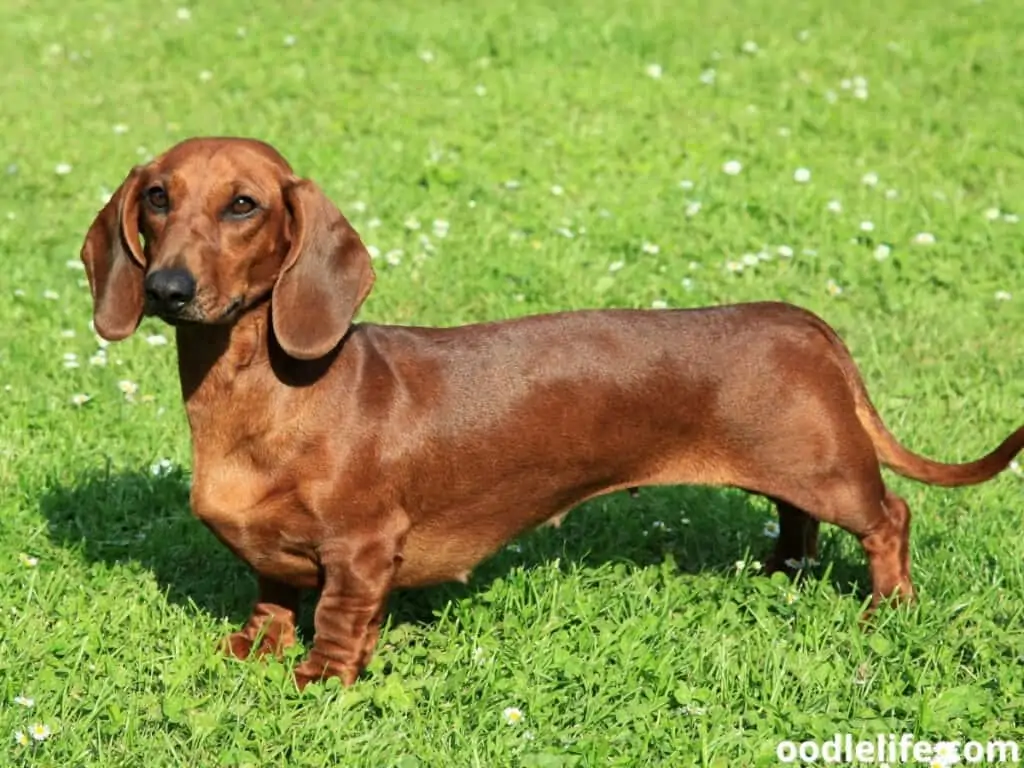
The Dachshund was primarily bred for hunting badgers and other small prey, such as rabbits or foxes. Its long, slender body and short legs were carefully crafted to enable them to incessantly dig through tunnels and burrows to reach their quarry. The breed’s determination, courage, and energy made them perfect hunting companions for their human counterparts.
In contrast to the Doberman’s Rottweiler and Black and Tan Terrier lineage, the Dachshund has its roots in the pinscher and hound families. This distinction displays the unique attributes and abilities of these two breeds, as well as their vastly different purposes throughout history.
While the Doberman and Dachshund may share some German origins, their development stories and breed characteristics set them apart as unique and distinguished canines. Both breeds have their own charm and place in the hearts of dog lovers across the globe. May we continue to cherish the delightful diversity of these four-legged companions!
Physical Traits
Doberman’s Size, Proportions, and Coat Colors
Dobermans are a medium to large-sized breed known for their sleek, athletic build, and distinctive appearance. Males typically stand around 26 to 28 inches at the shoulder, while females measure 24 to 26 inches. In terms of weight, males usually fall within the 75-100 pound range, and females 60-90 pounds.

Their strength and agility are highly-valued by owners and trainers alike.
This breed comes in a variety of coat colors, including black, blue, red, and fawn (which is a light yellow-brown). The most common coat is black with rust-colored markings. Speaking of the coat type, it is short, smooth, and lies flat against the body.
The famous “doogie mohawk” is just a rumor, but I wouldn’t put it past a stylish Doberman owner to start the trend.
Dachshund’s Uniquely Short-Legged Body
Now, let’s take a stroll down to Dachshund territory, where the grass is always greener at a lower perspective. Dachshunds, affectionately called “wiener dogs” or “sausage dogs” due to their extraordinarily elongated bodies, are a small breed full of character. Their legs may be short, but their personalities are tall!
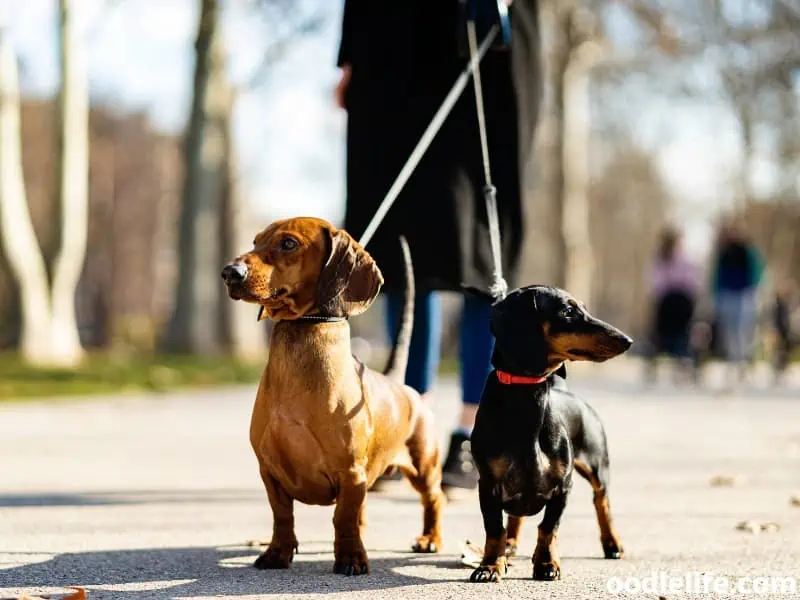
A Dachshund’s height is typically between 5 to 9 inches at the shoulder. As for weight, there are actually mini and standard-sized Dachshunds. Miniatures typically weigh under 11 pounds, while standard-sized Dachshunds range between 16-32 pounds.
Now, let’s talk coat colors and types. Dachshunds come in a plethora of colors, such as black, red, chocolate, cream, and even blue. You might say they have an entire wardrobe of options! Coats can be smooth, long-haired, or wire-haired, each with its own grooming and maintenance requirements.
Fun fact: a Dachshund with a blue coat color can be prone to color-dilution alopecia, so that stylish blue may come with some attached fur-fallout fashion challenges.
So, while Dobermans and Dachshunds may not be related by anything other than their double “D” breed names, their distinct physical traits set them apart in their unique ways. From the mighty musculature of the Doberman to the delightful “low rider” Dachshund, these breeds certainly make a statement!
Temperament and Personality
Dobermans: Intelligence and Guarding Instincts
Dobermans are known for their impressive intelligence, ranking in the top 5 of most intelligent dog breeds. These smart cookies tend to excel in obedience training and tasks that emphasize their problem-solving skills. Thanks to their high IQ, Dobermans are often chosen for jobs like police work, search and rescue, and therapy work.
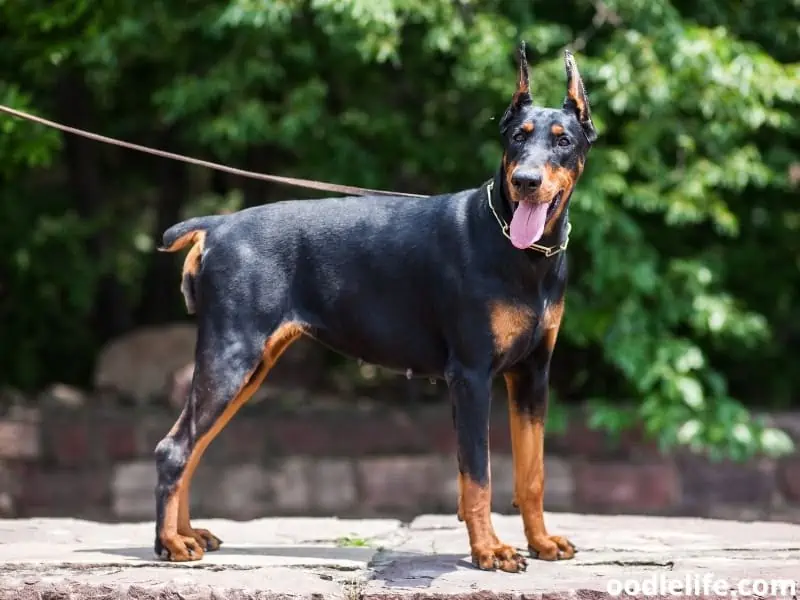
Their intelligence is accompanied by a strong guarding instinct, making them excellent protectors for their families. However, this natural instinct makes early socialization essential. Proper training and exposure to various situations can help prevent any unwanted aggressive behaviors.
A fun anecdote about Doberman intelligence: It’s often said that if a Doberman sees their owner doing something, they’ll likely try to imitate it. So, be careful what you do in front of your fido, or you might find them attempting to make coffee too!
Dachshunds: Independent and Affectionate Nature
Dachshunds, despite their small size, have a mighty personality. They are often described as independent and driven. This trait can make them a bit stubborn during training; they may prefer to do things their own way.
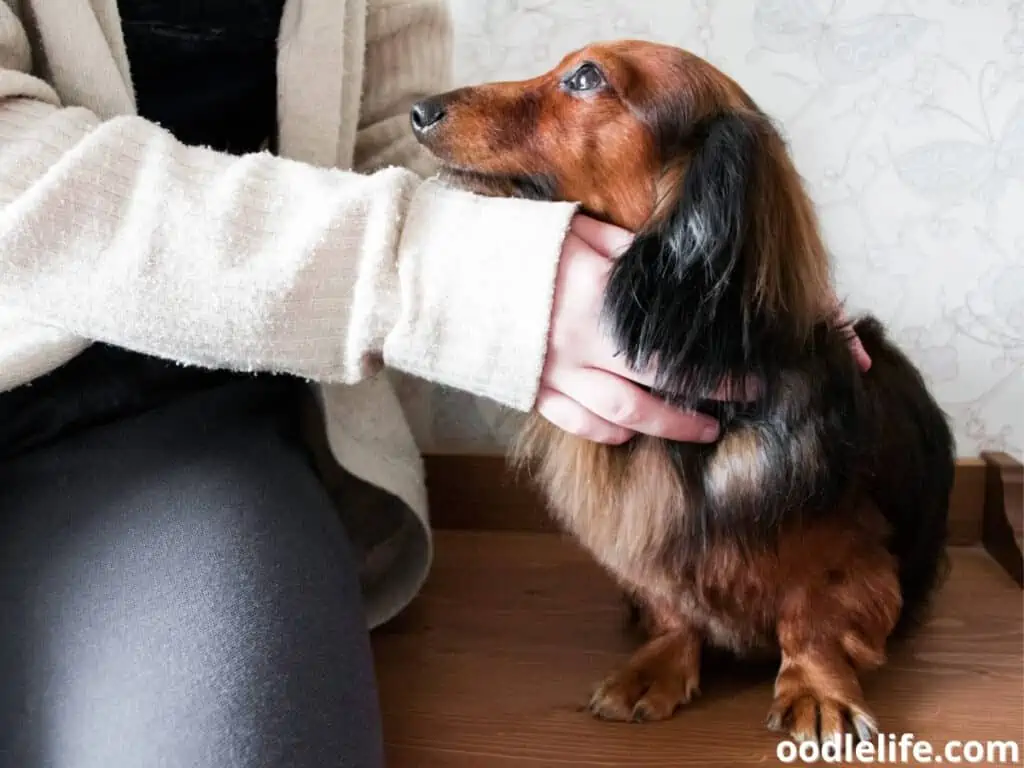
But with patience and gentle guidance, this little powerhouse can also excel in their training sessions.
In contrast to the Doberman’s guarding instincts, Dachshunds are incredibly affectionate and thrive on human companionship. Due to their affectionate nature, they can be great family dogs, snuggling up with their humans and demanding endless belly rubs. Don’t be fooled, though; this little sausage dog has no idea it’s not large and in-charge.
They often display a surprising amount of courage in situations where bigger dogs might even shy away from.
Here’s a humorous take on Dachshunds: It’s said that Dachshunds have never met a tunnel, hole, or small space they didn’t immediately want to investigate. Keep an eye on these curious little explorers; they might just find their way into mysterious spaces around your home!
Health Issues and Lifespan
When it comes to our furry friends, health issues and lifespan can vary greatly between breeds. In this section, we’ll take a closer look at the Doberman Pinscher and the Dachshund, examining some common health issues and their general lifespans.
Dobermans’ Heart Disease and Wobbler Syndrome
Dobermans, known for their sleek and muscular appearance, unfortunately face their fair share of health issues. Two significant concerns for this breed are heart disease and Wobbler Syndrome.
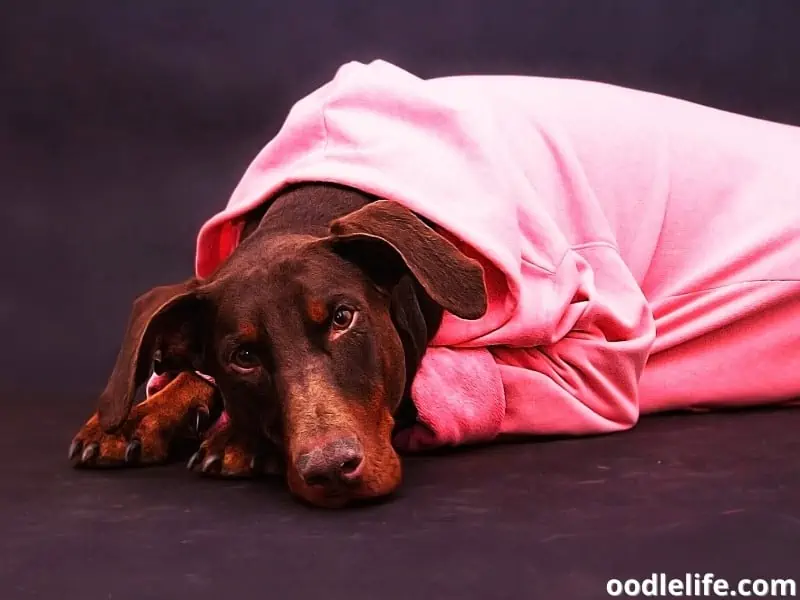
Did you know that Dobermans are prone to heart disease? In fact, one study of insured Swedish dogs found that Dobermans had higher mortality rates compared to other breeds. This is mainly due to a condition called Dilated Cardiomyopathy (DCM), which affects the heart muscle and its ability to pump blood effectively. Early detection through screening and proper veterinary care can help manage this condition, but it’s essential to keep an eye on your Doberman’s health.
As if heart disease wasn’t enough, Dobermans are also at risk for Wobbler Syndrome, a neurological disorder affecting the neck and spinal cord. This condition can lead to weakness, wobbly movements, and in severe cases, paralysis. Treatment options include medication, physical therapy, and in some cases, surgery.
While Wobbler Syndrome sounds like a dance from the ’60s, it’s no laughing matter.
Dachshunds’ Intervertebral Disc Disease
Dachshunds, famously known for their “hot dog” shape and short, stubby legs, face a unique set of health issues. One of the major concerns for these little wiener dogs is Intervertebral Disc Disease (IVDD). Due to their elongated spine and short legs, Dachshunds are more susceptible to spinal problems.

Remember when we talked about those insured Swedish dogs? Well, that study also included Dachshunds and found that they had a higher prevalence of intervertebral disc-related diseases. It’s not all doom and gloom for the Dachshund, though: early detection, preventative measures (like avoiding high-impact activities), and proper veterinary care can help manage IVDD.
So, if you happen to own a Doberman or a Dachshund, make sure you give them plenty of TLC. Keeping track of their health and working with your trusted veterinarian can help ensure a longer, happy life together. And remember, every dog – regardless of breed – deserves love, care, and a chance to bark up the right tree.
Recognized Breeds and Standards
American Kennel Club’s Classification
The American Kennel Club (AKC) is responsible for the classification and breed recognition of many dog breeds, including Dobermans and Dachshunds. The Doberman Pinscher, sometimes called “Dobermann” outside the US, belongs to the working group, alongside breeds like Rottweilers and German Shorthaired Pointers. Dobermans were initially bred in the late 19th century and are known for their loyalty, intelligence, and protective nature.
However, you can hardly find them cuddling up with their pint-sized, distant cousin – the Dachshund.
Yep, that’s right. Dachshunds and Dobermans are distant cousins. The Dachshund, affectionately nicknamed the “wiener dog” because of its hotdog-like shape, is part of the hound group in the AKC classification – sharing the group with dogs like Bloodhounds, Beagles, and Greyhounds.
Known for their spunky attitude and keen sense of smell, Dachshunds were bred in 15th century Germany to hunt small game such as badgers (which might explain their elongated bodies).
Between bites of sausages and sips of root beer, Dobermans and Dachshunds have one significant similarity: they both have connections to Germany – Germans knew what they were doing when they bred these dogs!
International Fédération Cynologique Standard
The Fédération Cynologique Internationale (FCI) also recognizes both the Doberman Pinscher and the Dachshund as standard breeds. Under the FCI’s classification, Dobermans are grouped with Pinscher and Schnauzer breeds in Group 2. This group includes the Doberman’s close relatives such as the German Pinscher, the Rottweiler, and the Miniature Pinscher.
On the other hand, Dachshunds waggle their small legs over to Group 4, the Dachshund group. The FCI recognizes three different coat types for Dachshunds – smooth-haired, long-haired, and wire-haired. Additionally, Dachshunds come in two sizes: standard and miniature.
Somehow, the Germans managed to pack all that spunk and energy into two different-sized packages wrapped in various coats!
Both breeds, despite their differences (and hilarious size discrepancy), have made significant contributions to the canine world, thanks to their unique skill sets developed to protect and hunt.
So, the next time you see a Doberman and Dachshund strutting down the street together, give them a respectful nod and a chuckle at their German heritage. They may not be the closest of cousins or share the same doggy group, but they’ve certainly carved out their special places in our homes and hearts.
Common Ancestry and Relations
Link Between Dobermans, Rottweilers, and German Pinschers
Dobermans, Rottweilers, and German Pinschers are breeds with some shared ancestry, originating from Germany. It’s like a family reunion where no one can agree on the potato salad recipe. Doberman Pinschers were bred in the 19th century as a combination of several breeds, including the German Pinscher, the Rottweiler, and other local dogs.
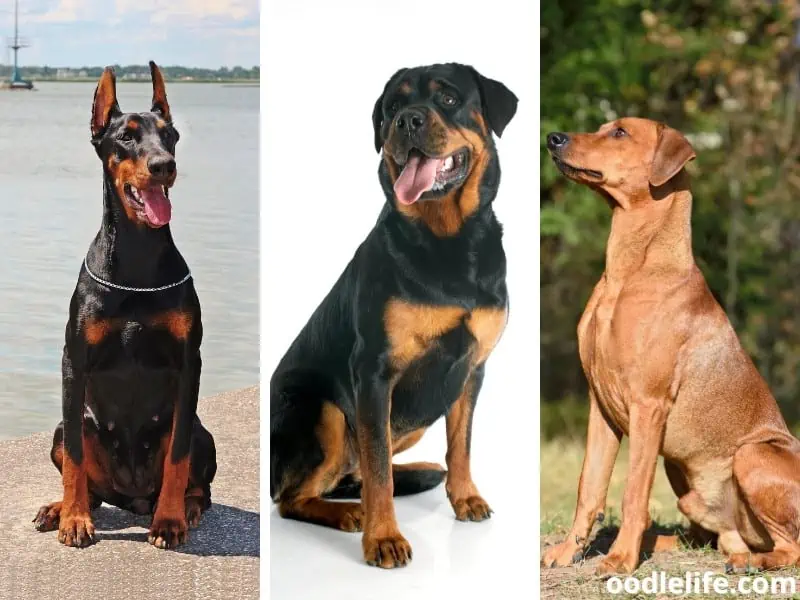
These three breeds share a common ancestor, which explains their similarities in appearance and temperament.
Though each breed has its quirks, they all have a few things in common:
- Size: These breeds tend to be medium to large dogs, with powerful, athletic builds.
- Temperament: They are known for their intelligence, loyalty, and protective instincts. It’s like having a doggy bodyguard who also aced the SATs.
- Working Heritage: Historically, they were used as working dogs for tasks like herding and guarding property, or simply scaring away unwanted visitors.
Dachshunds, Beagles, and Bloodhounds
On the other side of the family tree, we have Dachshunds, Beagles, and Bloodhounds. These breeds have their roots in hunting and tracking, so if you’re ever lost in the woods, one of these pups might just be your best friend.
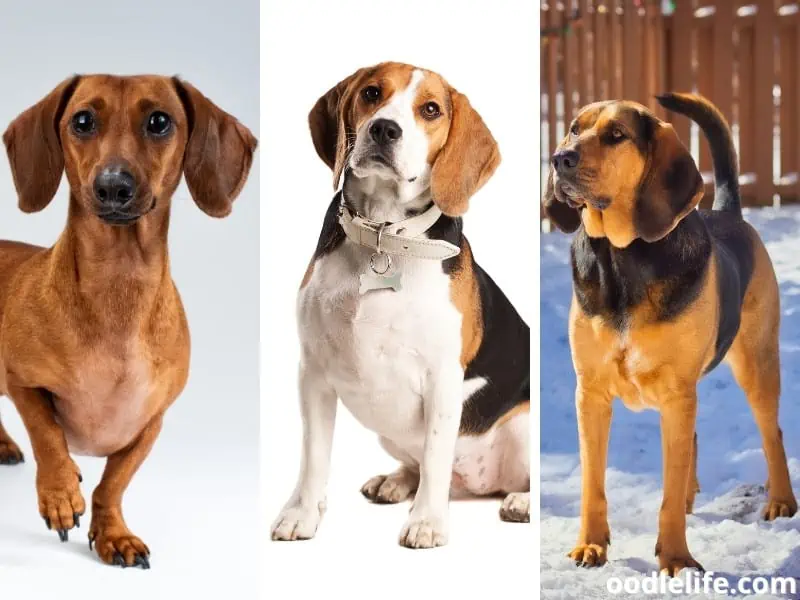
Here’s a brief overview of their shared ancestry:
- Hunting Lineage: All three breeds were developed for hunting small game, like rabbits and hares, or tracking the scent of larger game, such as deer and wild boar. Maybe not as glamorous as guarding castles, but still vital tasks in their time.
- Scent Hounds: Dachshunds, Beagles, and Bloodhounds are part of the “Scent Hound” group, which means they possess a strong sense of smell. If they had a superpower, it would be “sniffing out your hidden stash of treats across the room.”
- Physical Features: They share some physical traits like long ears (perfect for flapping in the wind), a strong sense of smell, and a relentless pursuit of their quarry. But as with any family, there is always a range of shapes and sizes: from the short-legged, elongated Dachshund, to the compact Beagle, and the larger, noble Bloodhound.
Despite the differences in appearance between Dobermans and Dachshunds, they both have a fascinating heritage, shaped by their respective ancestors and the tasks they were bred for. So, while these two breeds may not be as closely related as long-lost cousins, they each come from proud, storied lineages that would make any dog an interesting addition to your family tree.
Activities and Working Abilities
Dobermans as Guard Dogs and Workhorses
Dobermans, known for their sleek black (or sometimes fawn) coat and intimidating appearance, have historically been used as guard and protection dogs. As working breeds, they excel in various canine roles, such as police and military work, search and rescue, and even therapy. Some dog sports that showcase Dobermans’ agility and strength include Schutzhund and obedience trials.
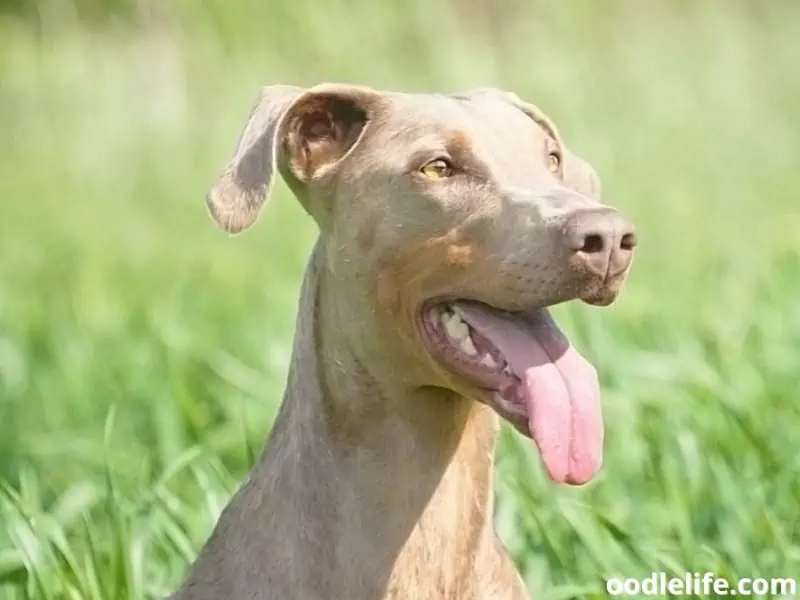
With an impressive energy level, these dogs are eager to work and please their humans.
It’s a known fact that Dobermans are fiercely loyal to their family, and their watchful gaze can make anyone think twice before entering their territory uninvited (even the mailman). Does your neighbor have a Doberman? Count it as a free security system! Despite their natural protective instincts, they can also be excellent family dogs when raised in a loving environment.
Dachshunds’ Hunting Skills and Companion Animals
On the other hand, we have the petite yet bold Dachshund or affectionately dubbed, “the wiener dog.” Don’t be fooled by their small dog stature. They may not be the first choice as a guard dog for obvious reasons, but they were historically bred for hunting.
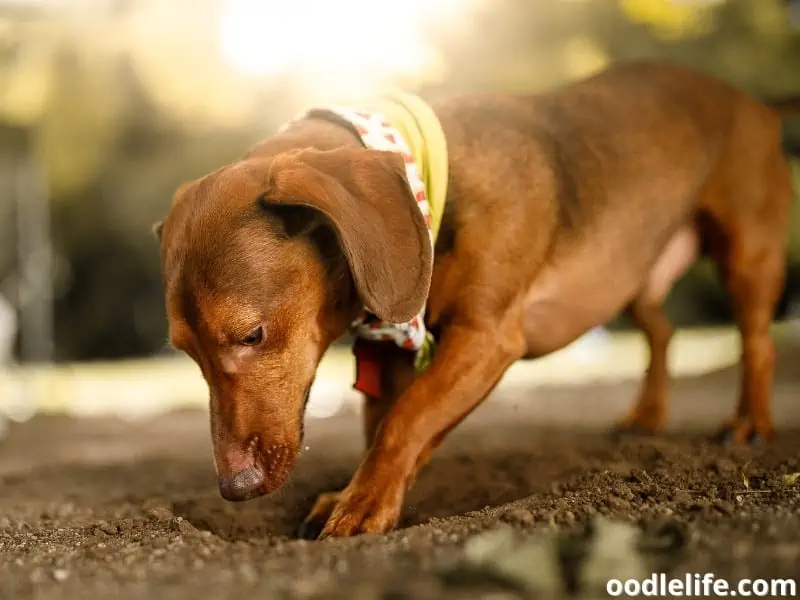
Their long, distinctive bodies accompanied by short, stubby legs are ideal to squeeze into tight burrows in pursuit of prey. And boy, do they love the hunt!
If your local wildlife is comprised of squirrels and mice, Dachshunds will have a field day protecting your garden. Dachshunds often have big-dog attitudes packed into a small dog frame, making for some entertaining and surprising bursts of energy. Due to their hunting heritage, they can exhibit bursts of energy, interspersed with couch naps.
Their spunky personalities and diverse coat colors make them fantastic companion animals.
In conclusion—oh, whoops, let’s not do that! Instead, it’s safe to say that even though Doberman and Dachshund differ in size, they each have a unique set of skills and qualities that make them incredible animals within their respective roles. So, if you’re pondering over which breed to choose, consider their working history and personalities but remember, the best dog always has that ineffable spark that suits your personal preference.
Frequently Asked Questions
Do Dobermans and Dachshunds share a common ancestor?
While all dog breeds share a common ancestor in the gray wolf, Dobermans and Dachshunds do not have a more recent shared lineage. Dobermans were developed in Germany in the late 1800s, whereas Dachshunds have been around since the 15th century, also originating from Germany. Though both breeds have German roots, they were bred for different purposes and have distinct ancestries.
What breeds are closely related to Dobermans and Dachshunds?
For Dobermans, their closest relatives are breeds like the German Pinscher, Rottweiler, and Weimaraner. On the other hand, Dachshunds are more closely related to breeds like the Basset Hound and Beagle, given their shared purpose of scent hound and hunting roles.
How are Dobermans and Dachshunds different?
Dobermans and Dachshunds have several key differences in size, appearance, and purpose. Dobermans are large, muscular dogs, known for their intelligence and strength. They were bred primarily for protection and companionship.
Dachshunds are significantly smaller, with elongated bodies and short legs, a design that was perfect for their original purpose of hunting and flushing out small game like badgers from their burrows.
Are Dobermans and Dachshunds part of the same breed group?
No, Dobermans and Dachshunds belong to different breed groups within dog classifications. Dobermans are part of the Working Group, due to their roles in protection and law enforcement. Dachshunds are part of the Hound Group, thanks to their history as scent hounds and hunters.
What are some key differences between Doberman and Dachshund temperaments?
Despite their considerable size difference, both Dobermans and Dachshunds can be known for their feisty and spirited temperaments. Dobermans are known to be intelligent, loyal, and protective of their families, which makes them excellent guard dogs. Dachshunds may be small, but they are courageous, stubborn, and independent, traits that have made them successful hunters in the past.
What similar traits do Dobermans and Dachshunds have?
Both Dobermans and Dachshunds can be affectionate and devoted companions, exhibiting loyalty and love for their families. They can also be quite energetic and playful, thriving in environments where they receive plenty of mental and physical stimulation. Lastly, both breeds have a strong work ethic and may perform well in obedience or agility training.
However, it’s important to remember that these are just general traits; individual dogs may vary.